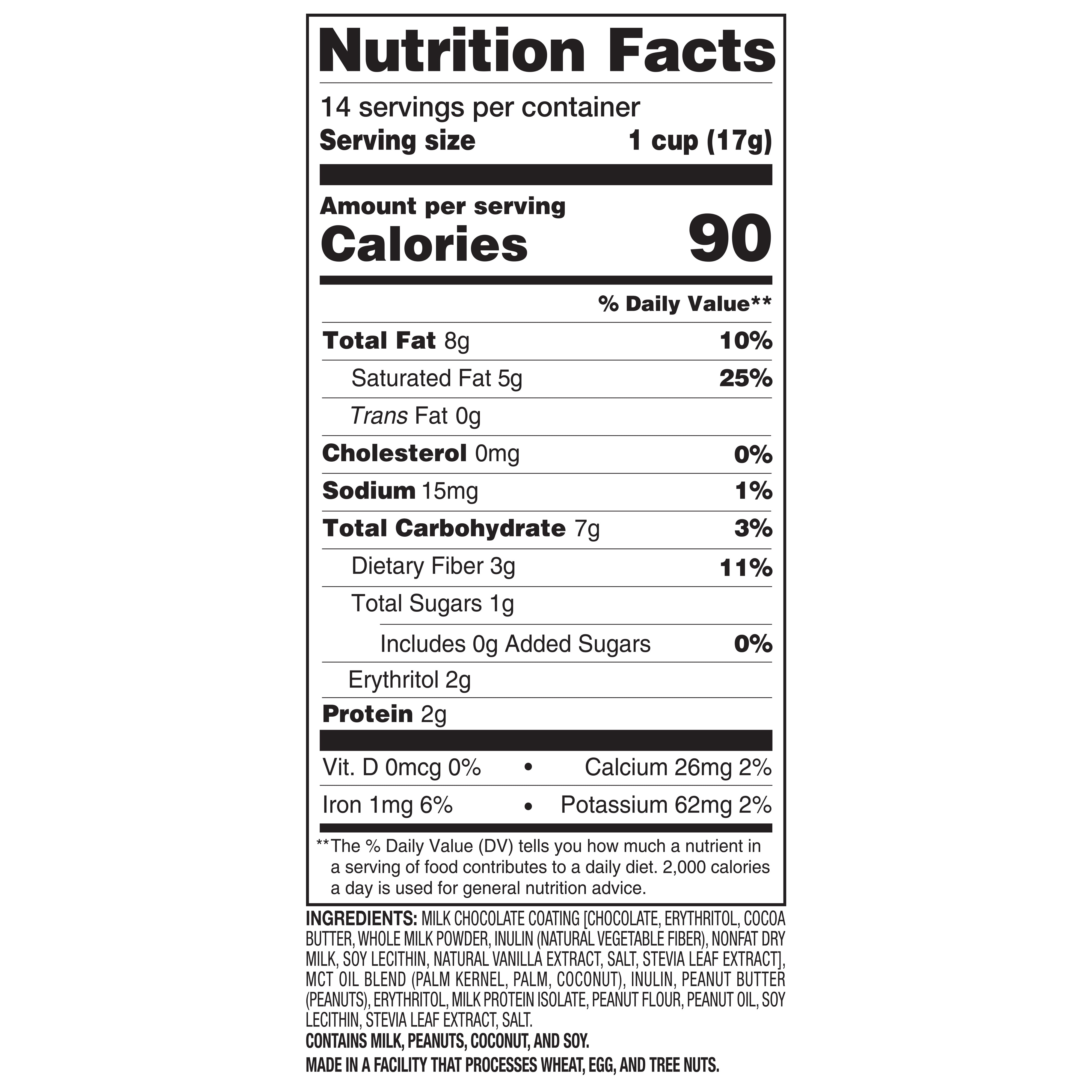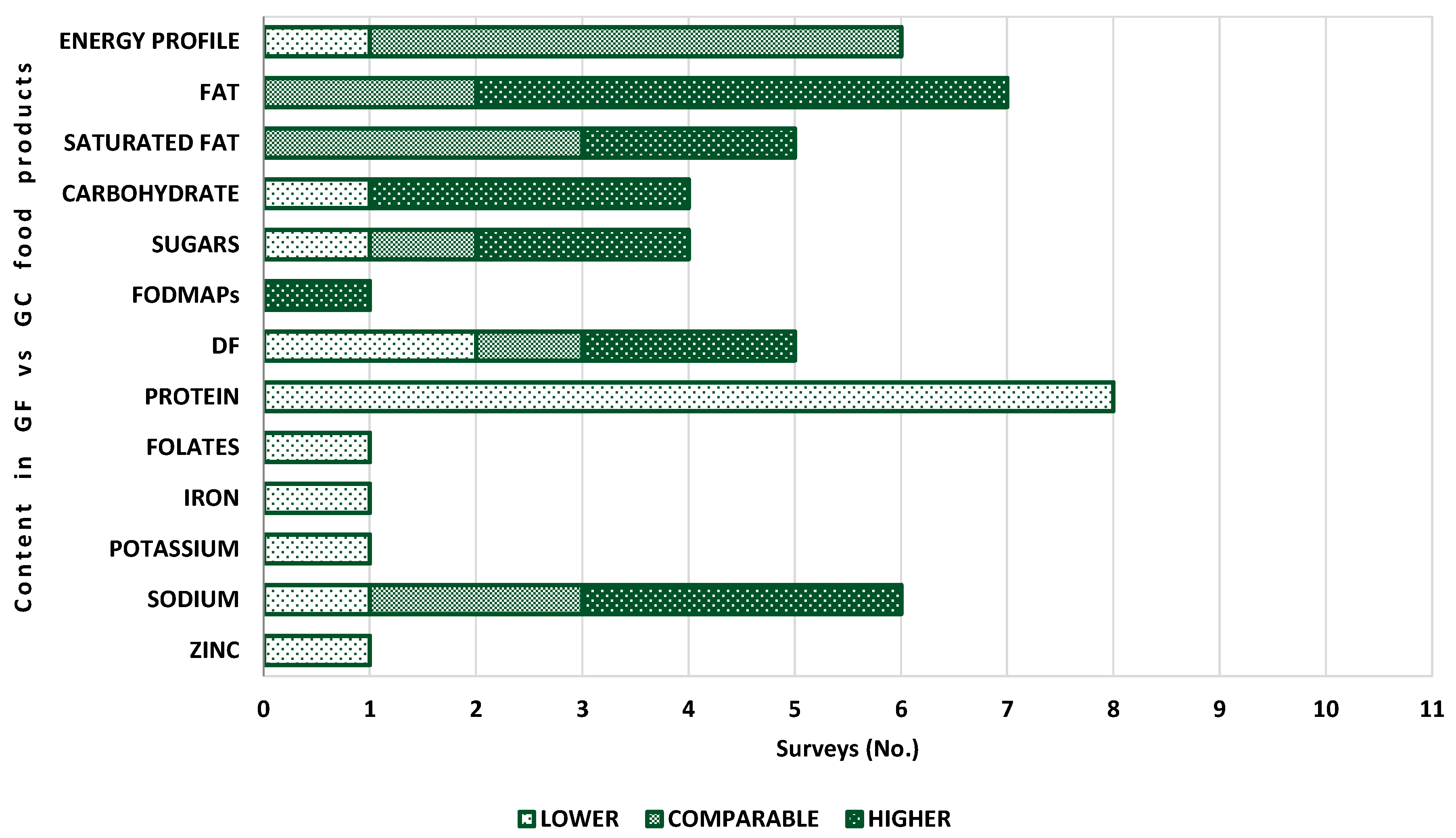39 macronutrients on food labels
Glycemic index is as reliable as macronutrients on food labels Glycemic index is as reliable as macronutrients on food labels. Am J Clin Nutr. 2017 Mar;105 (3):768-769. doi: 10.3945/ajcn.116.146092. nal.usda.gov › legacy › fnicFood Labeling | Food and Nutrition Information Center | NAL ... The U.S. Food and Drug Administration (FDA) with the U.S. Department of Agriculture (USDA) and the Environmental Protection Agency (EPA) initiative to provide consumers with science-based educational information to better understand how GMOs are made, learn more about the types of crops that have been modified, address questions they may have about the health and safety of GMOs as well as ...
› diet › healthy-eatingWhat are Macros in Food, and Should You Count Them? Mar 29, 2022 · Short for macronutrients, macros are the fat, protein and carbohydrates that make up food and help you create energy. You can find them called out on nutrition labels. When you count macros and adjust their ratios, you can use them to achieve health goals like weight management, to gain muscle or to get into ketosis.

Macronutrients on food labels
How to Read a Nutrition Label — and Finally Get Your Macros Right All whole foods provide a mixture of macronutrients (also known as macros) and micronutrients — which you'll see on a nutrition label. Advertisement As their respective names state, macronutrients are the nutrients that our bodies need in large amounts and are made up of: Fats Carbohydrates (including fiber and sugar) Proteins The Ultimate Guide To Macronutrients: Understanding ... - Swolverine Macronutrients (or macros for short) are the specific molecules that contain energy and nutrients to make up calories. Every calorie of food that you eat can be broken down into three main groups that contain energy (aka calories). Carbohydrates (1g carb = 4 calories) Protein (1g Protein = 4 calories) Fats (1g Fat = 9 calories) Understanding Food Labels and Health Claims - Maricopa This label is called a Nutrition Facts panel, which gives information on the number of servings per container, the number of calories per serving, and certain nutrients. Specifically, it lists the macronutrients and four of the most important micronutrients people need to pay special attention to, such as Vitamin D, Calcium, Iron, and potassium.
Macronutrients on food labels. Glycemic index is as reliable as macronutrients on food labels The GI of a food is the mean in n = 10 subjects . Thus, with an SD = 15.3, the SEM for n = 10 subjects would be 4.8 and the 95% margin of error, by using the t-distribution, would be 10.9. This margin of error, 10.9, is much smaller than the difference between low- and high-GI categories (i.e., 70-55 = 15), and there would be a chance of <1% ... How Do I Determine the Macronutrient Content of Fresh Foods? A 1/2 cup (90 grams or 119 ml) of fresh fruit or fruit juice, or a 1/4 cup (50 grams) of dried fruit, contains 15 grams of carbs, 0 grams of protein, and 0 grams of fat. Milk. One cup (237 ml) of... Food Label Accuracy of Common Snack Foods - PMC Deviation of macronutrient content from label statements Macronutrient content was measured in a subgroup (n=10) of all snack foods. Total difference in g and difference from label in % are shown for carbohydrates (CARB), fat (FAT) and protein (PROT). CI: confidence interval. P-values derive from Wilcoxon signed rank sum tests. The Science Behind Calories and Nutrition Facts Labels These main nutrients are fats ( lipids ), proteins and carbohydrates. Some calories you consume every day should come from each of the three nutrients. About 50 to 60% of your calories should come from carbohydrates, 30% of your calories should come from fat and 12 to 20% of your calories should come from proteins (©2020 Let's Talk Science).
Macronutrients: A Simple Guide to Macros - Avita Health System What Are Macronutrients and How to Count Macros - Food Network Food Labels: 60% Carbs, 30% Fat, 10% Protein Food label "Daily Value" amounts are set by the FDA and based on a 2,000 calorie diet, which is not appropriate for everyone. These macro values may be... Macro Math Is Hard: Understanding Nutrition Labels ... - AlexMaclin.com Step 3: Calculate your MacroNutrients Once you understand how to read a label and have tools to measure the food, you can figure out how much protein, carbs, & fat (macros) you have present. Let's say you need 25 grams of carbs for your meal and you want to get it from the whole-grain pasta. Here's the label again. › en › healthy-livingOptimum nutrition for sports performance: macronutrients ... Aug 28, 2018 · Optimum nutrition for sports performance: macronutrients & micronutrients Last Updated : 28 August 2018. A well-balanced and varied diet will usually be enough to meet the nutritional needs of most physically active people. 1 The tips below give advice on how to eat and drink well while being active, to help us feel energetic, perform well and recover faster.
How to Understand and Use the Nutrition Facts Label | FDA Dietary fiber, vitamin D, calcium, iron ad potassium are nutrients on the label that Americans generally do not get the recommended amount of. They are identified as nutrients to get more of.... What Are Macronutrients? All You Need to Know - Healthline Macronutrients include carbs, protein, and fat. They provide energy in the form of calories and are needed to maintain your body's functions and structure. Food sources of carbs, protein, and fat... How to Read a Nutrition Label For Macros | POPSUGAR Fitness For macros, he broke down how many calories per gram of fat (10 calories per gram), carbs (four calories per gram), and protein (four calories per gram) there are. These numbers will add up to the... › fun › macronutrientsMacro Calculator: Count Your Macros Like a Pro! Jul 29, 2021 · Weighing food may seem like a lot of counting and not much fun, but it gets easier over time. Fitness coach Vince Del Monte says in the article, "From Here to Macros: 4 Steps to Better Nutrition" that you quickly learn to "eyeball" quantities of both calories and macronutrients after just a few weeks of practice.
› blog › how-to-countHow to Count Macros: A Step-by-Step Guide - Trifecta Nutrition Apr 18, 2018 · Thus, a food or beverage containing 10g of fat will provide 90 calories from fat. Step 2. Calculate Total Macro Calories. You can calculate the amount you are eating by using the nutrition facts label. It really is that simple, anything that has a nutrition facts label also has macronutrients listed.
Macronutrients compliance between foods labels and marketing package ... Macronutrients compliance between foods labels and marketing package content values Authors: Yahya Pasdar Kermanshah University of Medical Sciences Mitra Darbandi Kermanshah University of Medical...
Understanding Food Labels and Nutrition - San-J Some of these components help the body activate macronutrients. You'll find examples of micronutrients like B vitamins, Vitamin D, iron, potassium and calcium towards the bottom of the nutrition label, along with their daily value percentages. What About Dietary Fiber? Fiber is a variety of carbohydrate and has two types.
How Do You Know Your Food's Nutrition Facts Label Is Accurate? It's the first major update to the labels in more than 20 years. The Food and Drug Administration (FDA) announced the new label format in May of 2016, and starting this year, food and beverage manufacturers must use it on all of their products. ... calcium and potassium), macronutrients (fats, proteins and carbohydrates), amino acids and ...
Nutrition Facts Labeling — FDA Reader Vitamins, Minerals and Macronutrients. The following vitamins and minerals are required on the nutritional label "Supplemental Facts" section. They must be measured in terms of percentage of daily value and weight. The minimum requirement is listed below (must be listed in this order): Vitamin D, Calcium. Iron.
How Do They Calculate Calories on Food Labels? 22 grams of carbohydrate (22 x 4 = 88 calories) 2 grams of protein (2 x 4 = 8) ...should contain approximately 140 calories. It's important to recognize that 4-9-4 is an average, and not an exact amount. For example, 1 gram of fat in one food may yield 8.34 calories while 1 gram of fat from another food yields 9.7 calories.
Macronutrients | Food and Nutrition Information Center | NAL | USDA Macronutrients Find general resources on carbohydrates, proteins, fats and cholesterol, fiber, and water below. Use these links for specifics on a particular type of macronutrient: Carbohydrates Protein and Amino Acids Fats and Cholesterol Fiber Water Energy Questions and Answers on Dietary Fiber HHS, FDA
This Is How to Read a Nutrition Facts Label on the Keto Diet This act mandated that, with a few exceptions, all packaged foods needed nutrition labels — thus creating the black-and-white labels we see on packaged foods today. The nutrients that required labeling included: Calories Calories from fat Total fat Saturated fat Cholesterol Sodium Total Carbohydrate Dietary fiber Sugars Protein Vitamin A Vitamin C
Macronutrients_Micronutrients_Food_Labels.pdf - THE... The macronutrients are as follows. • Calcium is found in bones and is important to blood clotting and muscular function.• Phosphorus is found in bones, in ATP (adenosine triphosphate) and in nucleic acids.• Sodium, potassium, and chloride are important for proper fluid-level maintenance.• Magnesium is important to cellular metabolism.
Food labels - NHS This type of label includes information on energy (kJ/kcal), fat, saturates (saturated fat), carbohydrate, sugars, protein and salt. It may also provide additional information on certain nutrients, such as fibre. All nutrition information is provided per 100 grams and sometimes per portion.
› news-articlesMacromolecules, macronutrients - how are they digested ... Apr 23, 2021 · In the pursuit of creating a healthy, well-rounded diet, many of us will consume foods from a wide variety of food groups. The energy we absorb and consequently store from the foods we eat will depend on various factors, including the types and amounts of food we consume, daily exercise regimes, and how our bodies handle nutrients (carbohydrates, fats, proteins, vitamins, minerals and water ...
Food Labels | CDC If you eat the whole thing, you are eating 8 times the amount of calories, carbs, fat, etc., shown on the label. Total Carbohydrate shows you types of carbs in the food, including sugar and fiber. Choose foods with more fiber, vitamins, and minerals. Choose foods with lower calories, saturated fat, sodium, and added sugars.
How To Read The Food Labels for Weight Loss Protein, carbohydrates, and fats are considered macronutrients. If your goal is weight loss, this is what you need to keep track of. I personally do not count calories, just macronutrients. So when you're wandering those isles, pick up the item and look for these 3 things. I circled them on this food label so you can see exactly what to look for.
› nutrition › best-macronutrientThe Best Macronutrient Ratio for Weight Loss - Healthline Sep 02, 2018 · Macronutrients refer to carbs, fats and protein — the three basic components of every diet. Your macronutrient ratio doesn’t directly influence weight loss.. The acceptable macronutrient ...
NCDA&CS - Kid's World - Understanding Food Labels Food labels show us if a food has a little or a lot of certain nutrients. Look on the side of a product to find the Nutrition Facts title. You will find the serving size of the food below the nutrition facts title. Similar food products have similar serving sizes. The servings per container are also included to let you compare what you actually ...
Macronutrients compliance between foods labels and marketing package ... Results: The amount of fat, carbohydrate, and protein content in 67.8%, 48.4%, and 38.5% of analyzed foods was different from their nutrition fact labels. The fat content on nutrition facts label of dressings was lower than their analyzed values (10.15 ± 15.87 vs. 11.40 ± 21.44 g, P = 0.001).
Understanding Food Labels and Health Claims - Maricopa This label is called a Nutrition Facts panel, which gives information on the number of servings per container, the number of calories per serving, and certain nutrients. Specifically, it lists the macronutrients and four of the most important micronutrients people need to pay special attention to, such as Vitamin D, Calcium, Iron, and potassium.
The Ultimate Guide To Macronutrients: Understanding ... - Swolverine Macronutrients (or macros for short) are the specific molecules that contain energy and nutrients to make up calories. Every calorie of food that you eat can be broken down into three main groups that contain energy (aka calories). Carbohydrates (1g carb = 4 calories) Protein (1g Protein = 4 calories) Fats (1g Fat = 9 calories)
















Post a Comment for "39 macronutrients on food labels"